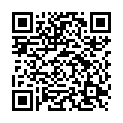|
|
|
| Module code: WIB21-WPM-T-110 |
|
|
1V+1U (2 hours per week) |
|
3 |
| Semester: according to optional course list |
| Mandatory course: no |
Language of instruction:
German |
Assessment:
Written exam
[updated 13.09.2018]
|
Exam recurrence:
The information regarding exam recurrence is found within the exam policy of the study programme (ASPO).
|
WIBASc-525-625-FÜ12 Industrial Engineering, Bachelor, ASPO 01.10.2013
, semester 5, optional course
WIB21-WPM-T-110 (P450-0006) Industrial Engineering, Bachelor, ASPO 01.10.2021
, optional course
|
30 class hours (= 22.5 clock hours) over a 15-week period.
The total student study time is 90 hours (equivalent to 3 ECTS credits).
There are therefore 67.5 hours available for class preparation and follow-up work and exam preparation.
|
Recommended prerequisites (modules):
None.
|
Recommended as prerequisite for:
|
Module coordinator:
Prof. Dr. Frank Kneip |
Lecturer: Prof. Dr. Frank Kneip
[updated 26.07.2023]
|
Learning outcomes:
After successfully completing this module students will:
_ be able to model basic mathematical/technical problems and solve them with the help of a CAS (Computer Algebra System).
_ have a basic understanding of the general structure of common CAS such as Maple, Mathematica, etc.
_ have basic knowledge of how CAS libraries can be successfully used as tools.
_ have basic skills that can be used to present their results in an appealing and adequate form.
_ be capable of independently solving technical program problems using the program´s internal help systems.
[updated 13.09.2018]
|
Module content:
1. Introduction to principles and operation of computer algebra systems (CAS) (e.g. Mathematica, Mupad, Maple, Derive)
2. Realization of small projects in the fields of graphics, numerics, differential and integral calculus, linear algebra and stochastics
3. Principles of mathematical modelling
4. Case studies on mathematical modelling and its implementation with a CAS (e.g. Mathematica), e.g. on cryptography, curves and surfaces, differential equations, Monte Carlo methods
[updated 13.09.2018]
|
Teaching methods/Media:
The program packages Maple, Matlab will be used.
[updated 13.09.2018]
|
Recommended or required reading:
_ Barnes, G./ Fulford, G. R.: Mathematical Modelling with Case Studies; Crc Pr Inc, 2008
_ Basmadjian, D.: Mathematical Modeling of Physical Systems; Oxford University Press, 2003
_ Davis W. / Porta, H. / Uhl, J. J.: Calculus & Mathematica; Addison Wesley, 1994
_ Edwards, D. / Hamson, M.: Guide to Mathematical Modelling; Industrial Pr Inc, 2006
_ Hearn, D. D. / Baker, M. P. / Carithers, W.: Computer Graphics; Prentice Hall, 2010
_ Walz: Maple 7, Rechnen und Programmieren; Oldenbourg Wissenschaftsverlag, 2002
_ Kofler, M. / Bitsch, G. / Komma, M.: Maple: Einführung, Anwendung, Referenz; 5. Auflage, Addison-Wesley, 2002
_ Werner, W.: Mathematik lernen mit Maple 1; 2. Auflage, Dpunkt Verlag, 2001
_ Werner, W.: Mathematik lernen mit Maple 2, dpunkt Verlag, 1998
_ Fiume, E.: Scientific Computing; dpunkt Verlag, 1998
[updated 13.09.2018]
|

